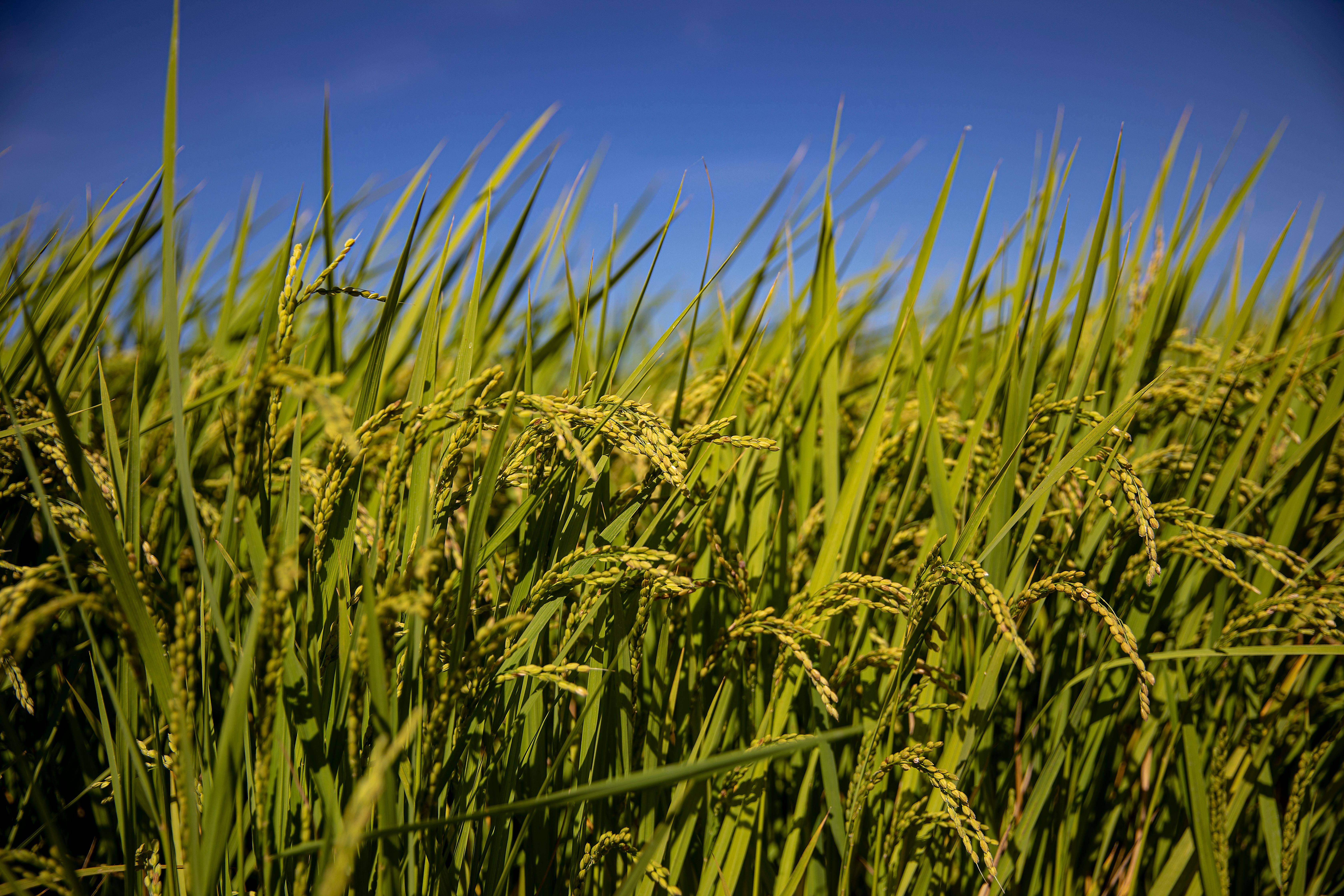[Oct] Urban farmers grow premium rice in Seoul
Date Sep 30, 2021
 Rice paddy in Gangseo-gu, Seoul. Photo by Shim Hyun-chul
Rice paddy in Gangseo-gu, Seoul. Photo by Shim Hyun-chul
●Rice paddies in southwestern Seoul create a unique autumn landscape.
●City residents are willing to pay more for locally sourced “Gyeongbokgung Rice.”
Those who visit Seoul’s southwestern district Gangseo-gu around this time of year will find a unique autumn landscape not seen in other big cities.
Amber waves of grain in a 261-hectare rice paddy unfold before the eyes, stretching far into the distance in a region that borders three neighboring cities: Incheon, Bucheon and Gimpo.
Situated near Gimpo International Airport, Gangseo-gu is Seoul’s last remaining rice growing region. The noise from the nearby airport, ironically, has saved the region from massive urban redevelopment, leaving the farmland intact.
Dozens of farmers have grown rice there for decades. This year’s harvest has already begun. Rice farmers there milled their first harvest in mid-September. They will wrap up this year’s yield in mid-October. Rice production varies from year to year, depending on weather conditions.
Last year, 1,227 tons of rice were produced in the region.
“Demand for locally sourced rice is very high and the entire yield has been sold,” said Han Jun, a consulting director at Seoul’s Agricultural Technology Center (ATC).
Rice produced in Gangseo-gu is popular among consumers for a few key reasons. It is locally sourced, premium-quality rice and available at a reasonable price.
Innovative farmers have tried to meet the ever-changing tastes of consumers by producing a wide variety of rice. For health-conscious consumers, some farmers grow organic rice. Farmers use apple snails in their paddies to control weeds in place of herbicides.
“Since no herbicides are used, organic rice paddies produce less rice than yields from non-organic paddies. As you can see, there are lots of weeds here and there,” farmer Kang Han-sung told Korea Here & Now, pointing to wild plants growing in his rice paddies. “They are not helpful, but we have no choice but to leave them as they are there because we don’t use herbicide.”
About 40 percent of the rice that the 65-year-old farmer produces is organic. The pesticide-free organic rice produced in the region is used to prepare school cafeteria meals.
The premium organic rice produced in Gangseo-gu is the result of decades-long collaboration between local farmers and ATC staff.
Back in the 1990s, Kang, who has grown rice in the region for three decades, said demand for Gangseo-gu rice was not as high as it is today. He said low-priced rice discouraged him and other urban farmers at that time. They felt their year-long hard work didn’t pay off because –while their rice was as good as the highly sought variety grown along the DMZ in Gangwon-do Province’s Cheorwon-gun County – their products fetched prices that were far below those of premium brands.
A consensus was built among these farmers and city authorities that a breakthrough was needed to better promote this urban rice.
ATC worked together with some 20 farmers to upgrade the quality of rice cultivated and promote the yield as locally sourced. They met regularly to learn about rice farming and ways to produce organic rice. They agreed on the need to create a unique brand. The idea of using the name of Seoul’s main royal palace was adopted in 2002 as it had a paddy for growing rice and Joseon kings themselves sometimes participated in the cultivation. Hence, “Gyeongbokgung Rice” came to be.
Branding and packaging has helped Gyeongbokgung Rice earn a reputation for high quality, and its price has risen accordingly.
Kang said the branding has also provided the urban farmers with a sense of pride in their products.
**If you have any questions about this article, feel free to contact us at kocis@korea.kr.**

The Ministry of Culture, Sports and Tourism's "Korea Here & Now" work can be used under the condition of "Public Nuri Type 1 (Source Indication)."




